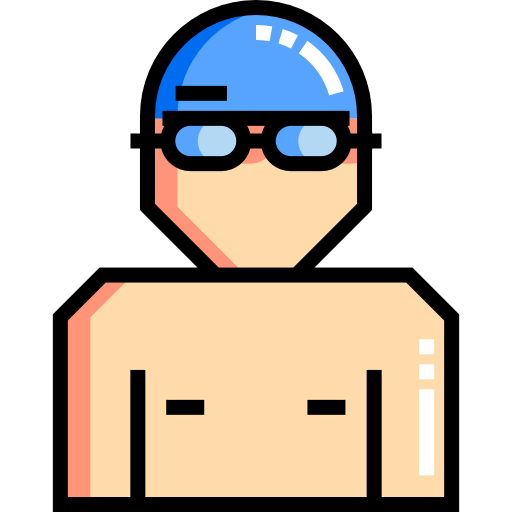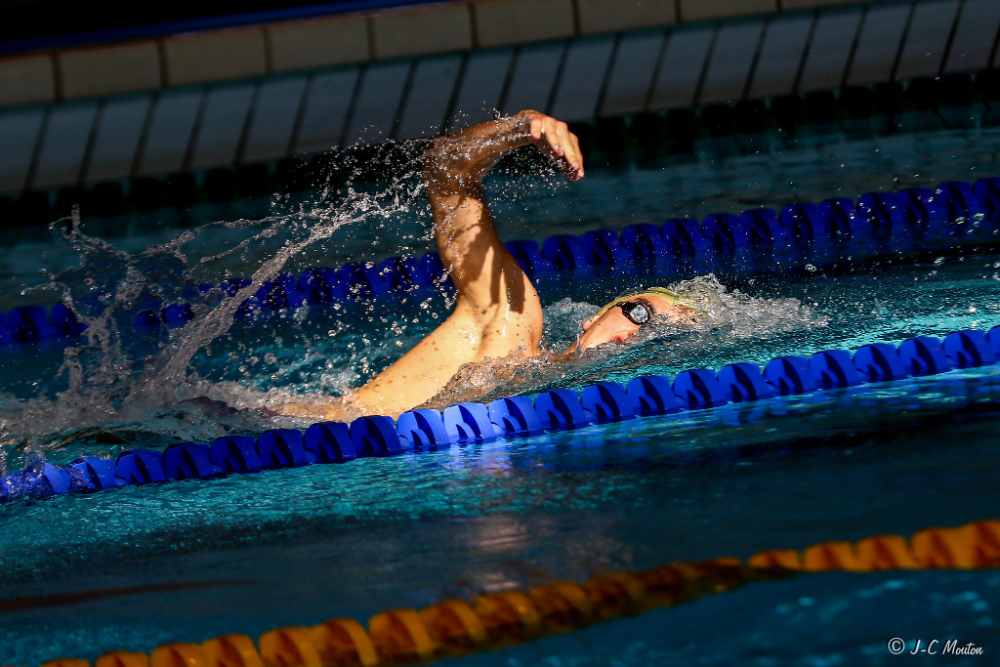Curious about how a snorkel can help improve your swimming? Here are 7 reasons to strap a swim snorkel to your face the next time you hop in the water.
The swim snorkel is a relatively new addition to the swimmer’s arsenal of training tools.
But when it popped on the scene in the late 1990s courtesy of the folks over at FINIS, the snorkel quickly gained popularity among competitive and recreational swimmers.
Here is how the right swimming snorkel can help you swim better and faster than ever.
1. Helps you unleash excellent technique.
Swimming with excellent technique in the water is hard enough. But you know what makes it even harder?
Breathing.
Seriously.
Think about how many technical errors result from when you turn your head to breathe.
- A pull that crosses the centerline.
- Ankles crisscrossing
- Picking your head up too high and throwing your body out of alignment
And so on.
Breathing—improperly—can cascade into more stroke dysfunction, causing a chain reaction of technical errors into your stroke.
While wearing a snorkel won’t automagically make your technique better, when you don’t have to concentrate on turning your head to breathe you can focus on swimming with an efficient stroke.
2. Improves stroke rhythm
One of the less talked about fundamentals of a good stroke is having rhythm in the water.
Because wearing a snorkel removes the hitch or gallop that a lot of swimmers use when swimming freestyle, you have a chance to get into a really good stroke rhythm.
The hitch comes from muscular imbalances and/or breathing solely to one side.
To get a little rhythm into your stroke, put on a swim snorkel. Especially if you are swimming long course, which gives you more time to get into that rhythm and to sustain it.
3. Add balance to your stroke
If you are like most—well, all—swimmers, you have a dominant side of your body in the pool.
We favor our strengths in the water, which is natural, but this can come back to bite us in the form of overuse injuries.
In fact, one of the leading causes of swimmer’s shoulder is muscle imbalances.
See also: 11 Reasons to Love the MP Michael Phelps Focus Swim Snorkel
A swimmer’s snorkel, by removing the breathing to one side, pushes us to swim with a more balanced stroke.
While we all love to work on our strengths, sometimes improving our weaknesses a little bit can carry more improvement in the water, and a snorkel can help you achieve a little more balance in your stroke, reducing the likelihood of injury.
4. An excellent alternative to using kickboards
I love doing kick with a board. I can gulp down as much oxygen as possible and I can somewhat make out the music that the pool’s PA system is playing.
But there are some drawbacks to using a kickboard relentlessly.
For starters, having your arms out in front of you and head perched out of the sky like the periscope of a submarine is hard on your neck and traps. With your head up, the hips tend to sink, which is not the type of motor pattern we want to be imprinting.
Kicking with a snorkel more closely mimics the body position you want in the water.
You will go slower at first compared to kicking on a kickboard, but experiment with this type of kicking (one arm in front, in a streamline, arms at side, etc.) and you will find yourself developing a stronger kick along with better body position.
6. Less strain on shoulders and neck
Let’s be honest here: turning your head hundreds of times per practice to breathe is going to eventually wear you down. Some of the worst cramps/tweaks I’ve gotten were in my traps after a long week of distance training.
The swimmer’s snorkel is a great option on days where your neck and shoulders are sore. Or on days when you are going to the pool for a recovery session.
A way to still get the meters and yards in at the pool, and with giving your neck and shoulders a little break, is swimming with a snorkel.
7. Troubleshooting technique
Finally, the swimmer’s snorkel is a way to fine-tune your technique in the water.
Without the distraction of breathing, you can keep your head down and dial in on problem areas of your technique.
Here are some ways to do this:
Sculling. One of the best ways to improve your feel for the water is sculling. Target a specific area of your pull (the catch, for example) and spend some time sculling there.
Warming up. Strap on a snorkel during your warm-up to swim to get into the groove of swimming with the technique you want during the main set.
Drills. And of course, use your snorkel to sharpen your technique when doing drills.
The Bottom Line
The swim snorkel is an excellent addition to your training arsenal.
Whether you have designs on going to the next Olympics or you want to swim a mile for the first time, using a swim snorkel can help you swim with better technique, improve body position in the water, address muscle imbalances and more.

Beau Cormier is a former NCAA I swimmer, US Open National finalist, and swim nerd. When not swimming or working for a data company, you can find him running the trails of the Pacific Northwest with his wife and dogs.


